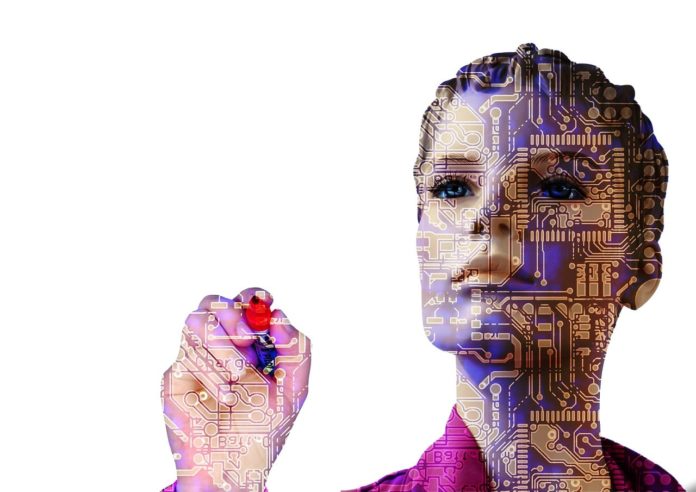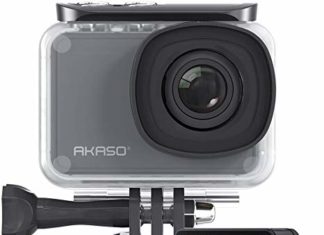Most of us have heard the term artificial intelligence in our lives, but some of us are not exactly sure as to what it means exactly. Different people have different definitions of it.
Artificial intelligence is a sub-branch of computer science that is concerned with making smart machines and innovations capable of performing tasks that would typically require human knowledge to do so. It is a science that consists of multiple approaches, but as time passes and we are making more advancement, AI has taken a paradigm shift in almost every sector of the virtual industry. There are different industries and categories where AI is being used.
Marketing departments and AI have a positive relationship with each other. Using AI in the marketing industry is a way of handling customer’s data and using AI to predict their next move to make their journey smoother and more accessible. By anticipating the next move means understanding a customer’s behavior in a different industry, for example, shopping. AI uses its algorithm to predict the customer’s next step by analyzing all the past data available about them.
AI can be used in different segments of the marketing industry. It takes sales forecasting to another level as respective marketers can compare recent communications simultaneously with traditional metrics to figure out answers to different questions and solutions to different problems. Using AI as a promotional tool will give you a competitive advantage over your competitors.
The advantages of uses of AI discussed above are the ones already operation and into existence. We will take a look at the upcoming AI trends in 2020 for marketers and how it could be used not to survive, but to thrive in this era of digitalization.
Also read: The Future of Artificial Intelligence in Travel industry
1. Knightscope K5 Robots
2020 is the year when we will probably realize that the industries that were previously human-oriented are now dominated by artificial intelligence. It already has taken over many simple jobs that previously required human assistance. For example, the Knightscope k5 robots are used to patrol park lots and large areas to prevent as well as predict the crime itself.
The robots are programmed to read and analyze the license plates, report dubious actions to their respective owners. With such advanced technologies built-in with such complex algorithms, you would think the cost of renting such a robot would be expensive. However, to your information, you can rent these robots for $7 an hour- which is lesser than a human security guard wage.
2. Programmatic Advertising
Programmatic advertising is to target more specific audience for AD buying using AI. An example of such advertising would be the use of real-time bidding. The automation is fast, which means higher conversions and lower customer acquisition costs.
“Most search-driven manual advertising campaigns (even those performed with professional tools) take into account three or four targets: the keyword, time of day, and location. Such tools, like programmatic demand-side platforms, can use hundreds of targeting signals to individualize the advertisement and even target according to lifestyle or behavior habits when integrated with customer data platforms.” – Irina Kovalenko.
Furthermore, AI can also be used to optimize digital advertising campaigns for your website and to generate ways to increase organic traffic.
3. Chatbots
Chatbots have been in existence, and this trend will continue to be an essential part of digital marketing in 2020. For those of us who don’t know what chatbots are, they are AI-based technology that is programmed to chat with customers or people who visit your site using an instant messaging system. According to a survey, it is said that.
- Chatbots will be in control of 85% of customer service by 2020.
- They are beneficial to the company in the manner of availability and prices as they are a 24 hour based service, they possess the instant response to inquiries, and they are cost-effective as well.
- It is found in a study that chatbots will save around $8 Billion by the year 2022 in the business industry.
- According to a recent poll, 80% of the businesses want chatbots by 2020.
Also read: How Can Artificial Intelligence Improve Packaging Process
4. Conversational Marketing
With chatbots in preference and the increasing demand in the customer support area, marketing has taken a newer, better turn-in response to consumer needs. Consumers and customers ask for immediate answers to their questions, and conversational marketing has been programmed to do so. It facilitates one-on-one, real-time conversation between the bots and the consumers.
5. Personalization
The clichés of marketing techniques are no longer preferred or suggested by the customers as well as marketers. If you need to have a competitive advantage over your competitors, you need to have personalized content, email, and much more.
The use of AI for personalization is an important trend that will be growing into a much more important role in the coming years. The best example of personalization would be Netflix and Amazon, as it chooses the movies and products based on your previous choices using AI.
6. Visual Search
Visual search is planning on taking the user’s experience to a whole an other level. Traditional ways of searching and surfing the web were by writing whatever we needed on the search bar and waiting for the results.
With the effective use of AI, customers will now be able to conduct a visual search, i.e. by uploading a picture on the search bar to get more accurate results. Pinterest has already taken the lead on this trend as it has introduced a visual search bandwagon which allows users to take pictures and post them on Pinterest to see where they can buy the particular product from.
Alongside Pinterest, these search engines have also developed the use of visual search for different purposes:
- Google lens
- CamFind
- Bing visual search
As more advancements are taking place, the use of AI has enervated the level of cybersecurity, which was once available to the users.
Also read: Top Benefits to Digital Industries from Artificial Intelligence (AI)
7. Micro-Moments
Micro-moments are a trend that is growing and are expected to grow at a high rate by 2020. They are defined as an “An intent-rich moment when a person turns to a device to act on a need – to know, go, do or buy.” These micro-moments are subcategorized into four important types that matter for a marketer to take advantage of:
- I-want-to-know moments: When a customer is just researching and exploring, not in a clear mood of purchasing.
- I-want-to-go-moments: When a customer is looking for a local business or is considering buying a product from a nearby store.
- I-want-to-do moments: When a customer is looking for help to complete a task, activity or is trying something new.
- I-want-to-buy moments: When a customer has made up their mind and is ready to purchase and need help with a specific thing.
These are the moments in which the customer decides what they need, and they are attracted to the brands that provide in these situations. By using AI, marketers can be quick, useful, and available in order to attract more customers and to create goodwill in the coming years.
Also read: How AI Is Being Used in the Tax World?











